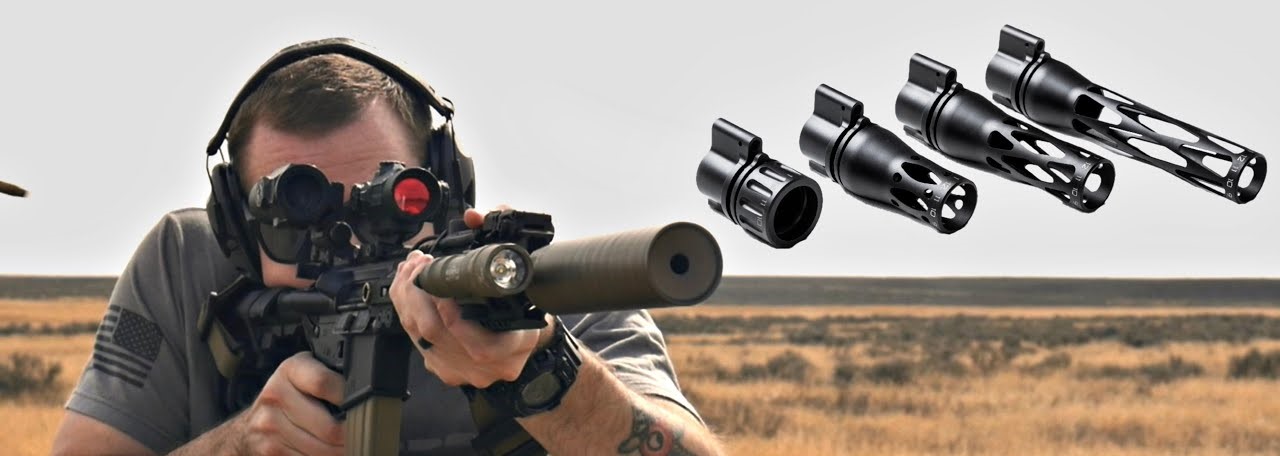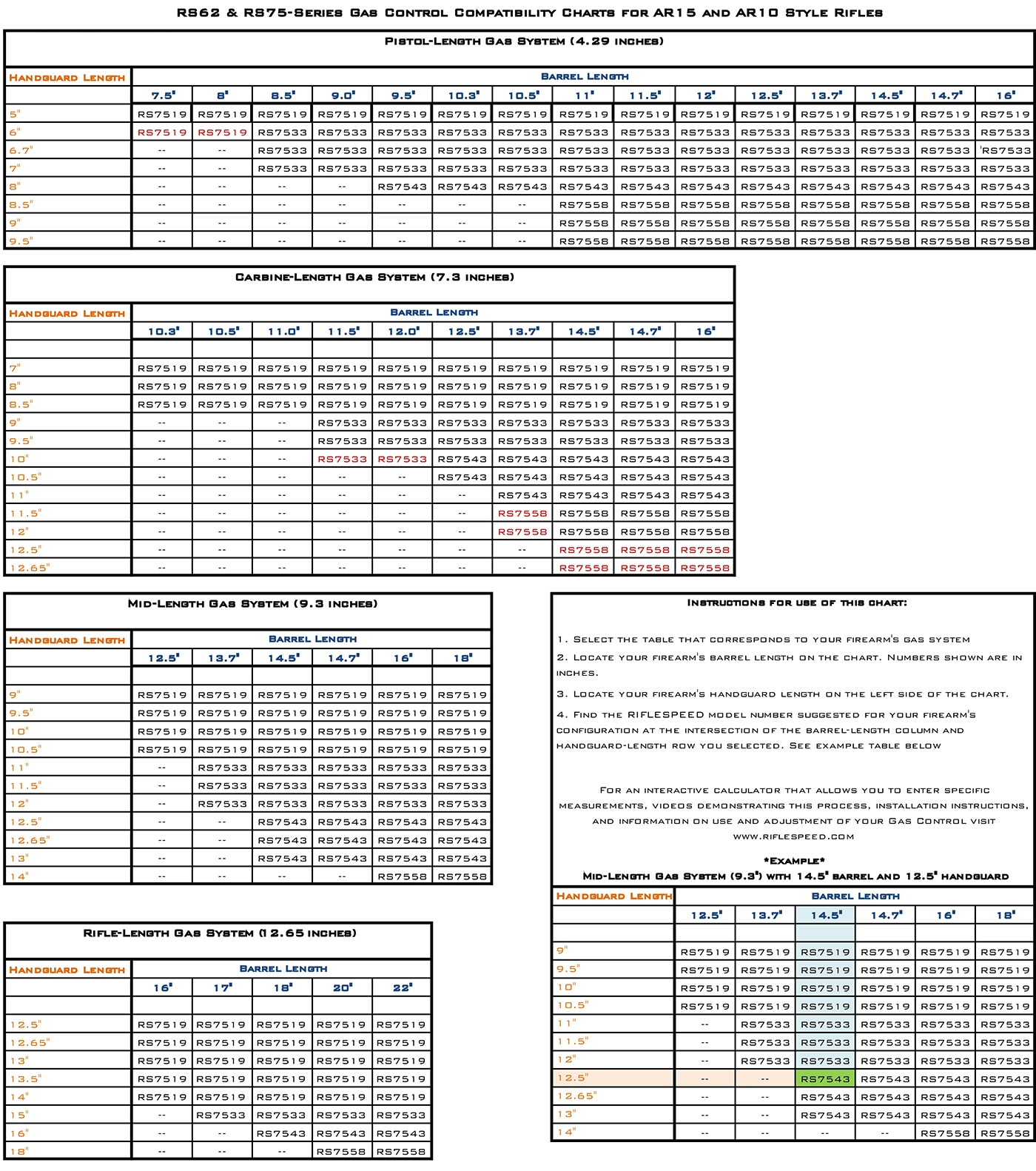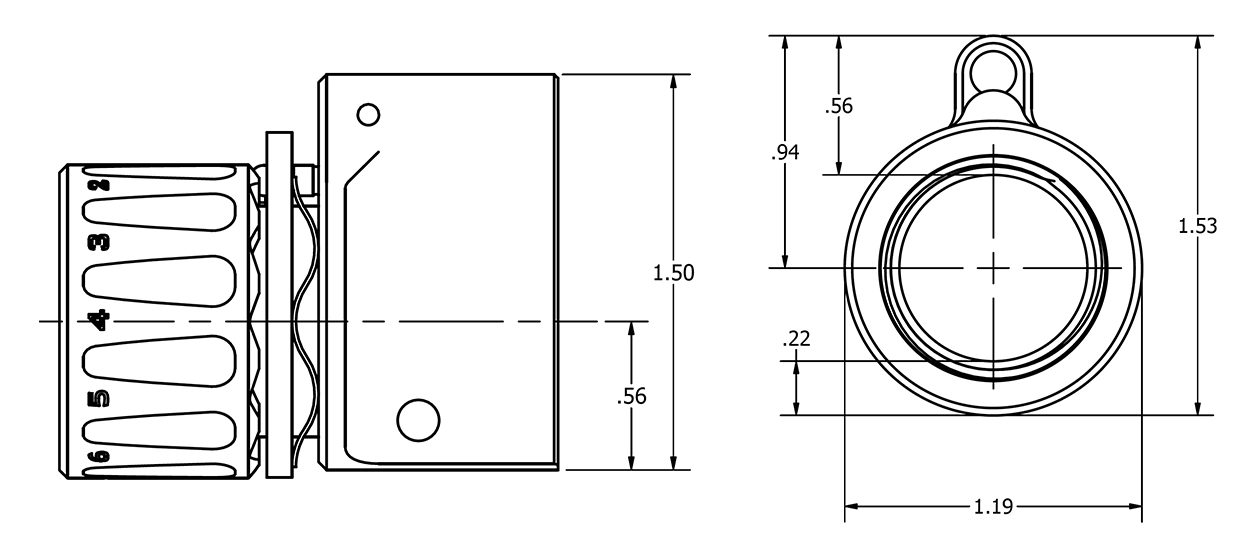

At Charlie's, we tend to be traditionalists, or better put: We tend to follow what the military community does. So, when the leadership of this new company, Riflespeed approached us about an adjustable gas block, we were like: "nah, been there, seen it, not worth it." Our prejudice, if you will, was: adjusting the gas flow is an excuse for not getting the basics done right to begin with.
Then we listened. Gas flow and pressures can vary widely, and this can affect your shooting. Ammo is different. Altitude is different. Gas ports are different. Barrel manufacturers have accommodated for most of this by choosing a different size gas port (the hole in the barrel) for different barrel lengths and different gas systems. The pressure in a 10.3" barrel is much greater than in a 24" barrel, as the bullet has moved, and volume has increased significantly, as the length of the barrel moves further from the point of ignition in the chamber.
Another variable is what is called "dwell time," which probably should be called "dwell distance." This measured by the distance from the gas port to the muzzle. During this length, or period of time, the bullet is traveling through the barrel, the gas has a chance to exit, under extreme pressures, through the gas port, and into the gas tube, and back to move the bolt carrier group, and eject the spent round. By the time the bullet exits the barrel at the muzzle, the gas pressures in the gas system now go back to normal ambient air pressure. So, the longer the dwell time, the longer the period of time that gas is flowing back to the BCG and out the chamber in a backward direction. So, is a long dwell time good, or is a shorter dwell time better? Aha, now you see the more of the complexity of the gas system in an AR15 style weapon. The carbine gas system has a gas port drilled at a specific length in the barrel, regardless of the overall length. Thus, a 10.3" barrel will have a much shorter dwell time than a 16" barrel with the same carbine gas system. Barrel makers have made adjustments, by providing for a larger opening (gas port) with the shorter barrel and a smaller opening with a longer barrel. Also, barrel makers have moved the gas port out to a mid-length, an intermediate length, or a rifle length as the length of the barrel becomes longer.
But, no matter which barrel configuration you choose: length, gas system, gas port size; the barrel is now fixed in its characteristics. The only real answer has been to adjust the buffer weights to accommodate the change in energy of the BCG, as it moves backward, out of battery and ejects the spent brass. And, to reduce the gas that ends up in the shooters face, the answer has been to tune the charging handle or the carrier to reduce gas blowback, and cause more gas to exit at the ejection chamber and not backward to the shooter.
But, what if you could change the amount of gas that enters the gas tube? Well, this has been done for a decade or more by either switching the gas off, making the rifle a bolt operated gun, and not operate in semi-auto mode, or to move to low gas and normal gas, which helps for use when suppressed. Many gas blocks have entered the market to make the gas flow turn off, tune down, tune up, etc. Shooters who move from suppressor usage, which causes higher pressures to push backward for a longer period of time, to unsuppressed fire, have taken advantage of adjustable gas blocks. While adjustable gas blocks have been around since the M1 Garand in WW2, the proliferation of suppressors in recent years has seen an up-tick in adjustable gas blocks since roughly 2012 or 2016 to present day.
In our view, the Riflespeed line of products has made the adjustable gas block just plain easy. Prior to the Riflespeed gas block, the process of making an adjustment has been cumbersome. Some adjustable gas blocks have a screw, some have a lever, and getting to the gas block to make a change has been hard. Some rifle manufacturers have responded by making a break in the handguard to access the lever or screw to make changes in the field, which is helpful. The vast majority of adjustable gas blocks are under the rail and hard to get at, or are exposed and prone to breakage. The absolute last thing you want is for your screw to get worn out or lose, and now lose control of your gas flow. The Riflespeed brand brings a number of lengths to the adjustment mechanism, and makes it accessible to change, and make twelve (12) adjustments, and not just off-on or low-high, or even worse, variable and in the middle, but not measurable or repeatable.
We also like the Riflespeed brand of adjustable gas blocks for the ability to choose with short barrels and mid-sized barrels, the length of the adjustment mechanism that is under the rail or outside the rail, which can be really cool in the design of a shooter's overall rifle: its usage and its looks.
The RIFLESPEED Gas Control System makes controlling the rifle's gas flow reliable, repeatable, and foolproof. Need more gas? Turn it up. Need less gas? Turn it down. With the easy-to-grasp Control Knob, it's that simple and no tools are required. The highly visible numbering on the Control Knob ensures that you'll always know your setting. Return to a previous setting instantly by simply turning the Control Knob. Each setting is indicated by a highly tactile "click" for use during times of reduced visibility. Two separate rotation ranges with numbered settings 1-12 and multiple Plunger sizes cover the adjustment requirements for every available cartridge. The patented Rotation Stop feature prevents unintentional disassembly.
Designed for the most rigorous Military or LE Duty Use, RIFLESPEED Gas Controls are also ideal for defensive use, competition, recreational shooting, or hunting. RIFLESPEED Gas Controls are durable and proven to perform through tens of thousands of rounds of ammunition spent in developmental and destructive testing. Gas Controls from RIFLESPEED are the ultimate solution to the problems of operating hard-use carbines in varying conditions, configurations, and environments.
With complete control of the gas that's delivered to the action of your rifle with each shot, you'll enjoy increased reliability, reduced recoil, reduced muzzle rise, less aiming disruption, less wear and tear on your rifle, and improved accuracy. Set your RIFLESPEED Gas Control for ideal performance with light commercial ammo or higher-pressure milspec ammo. Dial your gas system in for ideal performance in extreme heat or frigid cold conditions. Enjoy optimal performance with or without a suppressor. With a properly adjusted gas system, you can eliminate the need to use exceedingly heavy buffers. Once you experience the advantages of using a RIFLESPEED Gas Control, you’ll never want to shoot anything else.

* For other gas journal sizes, contact us for availability

Made in the USA.